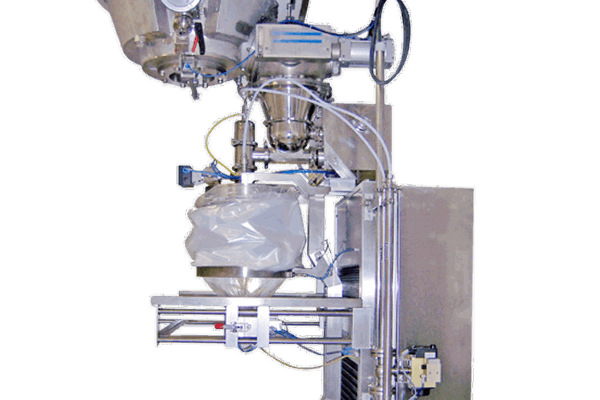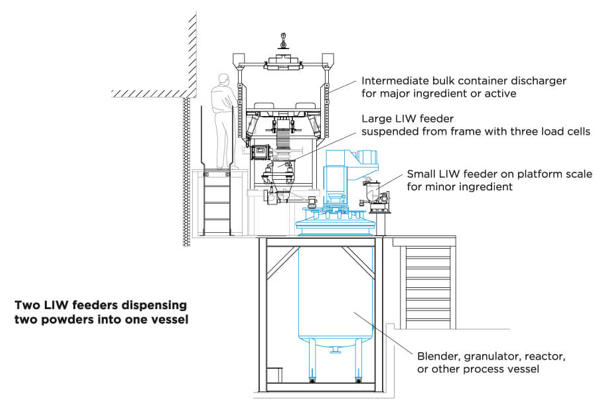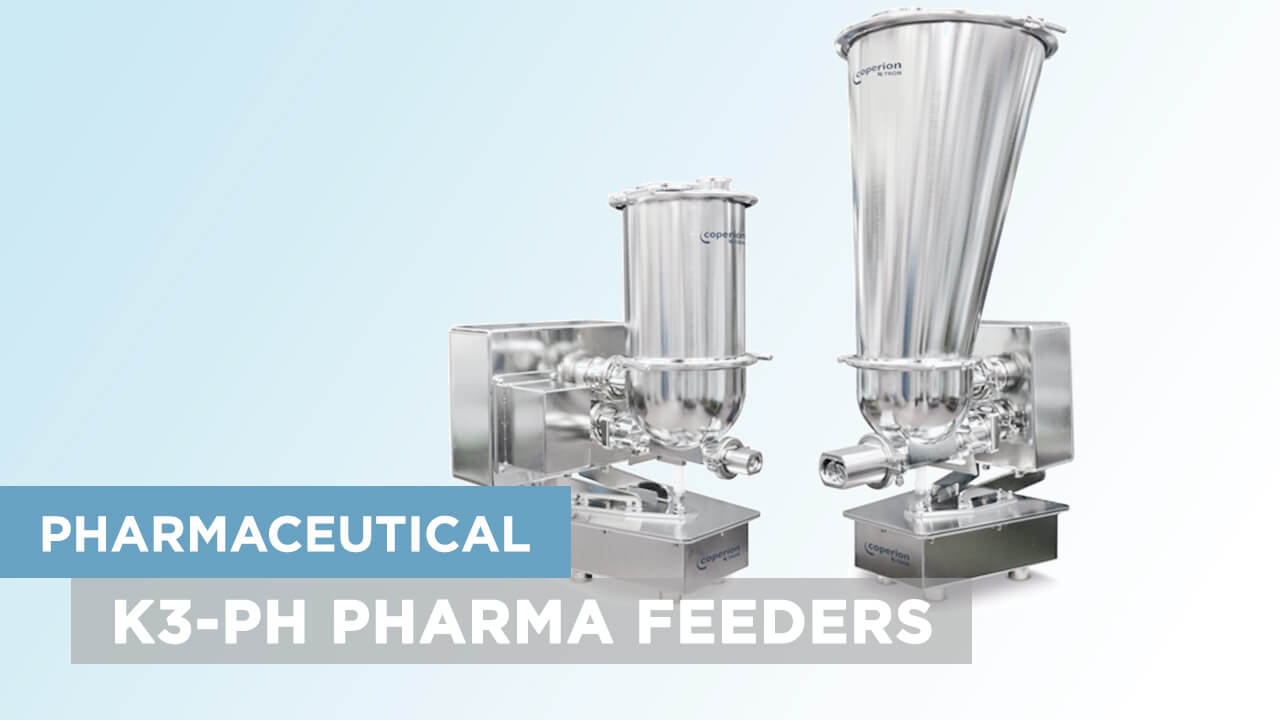Superior accuracy gain-in-weight and loss-in-weight batch weighing of final blends, excipients and active pharmaceutical ingredients
Automated dispensing systems are utilized throughout the pharmaceutical industry for the transfer and weighing of excipients, active pharmaceutical ingredients (API’s) and lubricants into a variety of containers and processes. The use of screw feeders in both loss-in-weight (LIW) and gain-in-weight (GIW) dispensing systems ensures the accurate metering of the product to the process or container below. Coperion K-Tron’s integrated material handling and feeding systems are available in a variety of dispensary configurations, dependent upon the material to be transferred, the containment levels required and the process requirements. Typical dispensary systems often include the integration of the Coperion K-Tron pharmaceutical line of pneumatic conveying equipment, as well as the high-accuracy line of pharmaceutical design screw feeders.
Products include:
- API’s (of varied potency levels)
- Excipients (e.g. microcrystalline cellulose MCC, hydroxypropylcellulose HPC, croscarmellose sodium, lactose hydroxypropylmethyl cellulose HPMC, silicone dioxide, titanium dioxide, povidone PVP, cross povidone, starch, etc.)
- Lubricants (e.g. magnesium stearate, calcium stearate, stearic acid, etc.)
- Diluents and fillers (e.g. salt, calcium phosphate)
- Binders (e.g. carnauba wax, corn starch, gelatin, sucrose)
- Coloring agents & preservatives (e.g. iron oxide, ferric oxide)
- Synthetic polymers (e.g. polyvinylpyrrolidone PVP , polyethylene glycol PEG)
- Glidants (e.g. fumed silica, talc, magnesium carbonate)
- Sweeteners and flavorings
- Vitamins and antioxidants
- Final formulation blends















